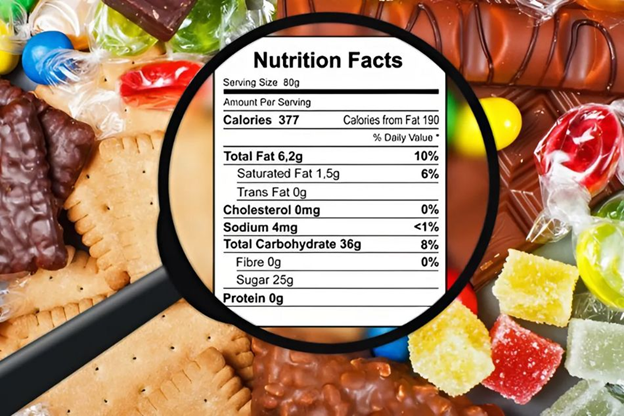 English
EnglishThe Fiber-Blood Sugar Relationship: Role in Diabetes Control

Fiber plays an important role in blood sugar control in people with diabetes
Fiber is a strategic dietary component in diabetes management, directly impacting the fundamental goal of post-meal blood sugar control. Beyond its simple digestive function, it is a key factor in how the body responds to carbohydrates and is key to achieving long-term stability. Building an effective fiber-rich diet begins with understanding the distinct functions of soluble and insoluble fiber, as well as the scientific evidence behind them. From this foundation, practical guidelines are presented food choices.
The relationship between fiber and blood sugar
To understand why fiber is important for people with diabetes, we need to delve into its nature and mechanism of action on glucose metabolism in the body.
Fiber – The “friendly” carbohydrate
Fiber is essentially a complex carbohydrate derived from plants. However, the core difference that makes it special is that the human digestive system lacks the enzymes needed to break it down and absorb it. Instead of being converted into sugar (glucose) to provide energy like other carbohydrates, fiber passes through the stomach and intestines almost intact. A direct consequence of this property is that fiber does not raise blood sugar levels, making it a “friendly” and safe carbohydrate for people with diabetes.
Mechanism of fiber to reduce sugar absorption rate

Fiber slows down the absorption of sugar into the blood
One of the biggest challenges in diabetes management is postprandial hyperglycemia, especially when consuming refined carbohydrates such as sugar, white bread or white rice. These foods are simple in structure and are broken down and absorbed into the bloodstream very quickly. However, when a meal is combined with a high amount of fiber, a natural “brake” mechanism is activated.
Fiber acts as a physical barrier in the intestines, slowing down the breakdown of carbohydrates and thereby regulating the rate at which glucose is absorbed into the bloodstream. As a result, blood sugar rises more slowly and steadily, giving the body enough time to react and use insulin effectively and avoiding dangerous blood sugar peaks.
The role of each type of fiber on blood sugar
To understand this mechanism more deeply, we need to distinguish the separate roles of two main types of fiber: soluble fiber and insoluble fiber. Each type has a different mechanism of action but complements each other to create comprehensive benefits.
Soluble Fiber: “Regulator” of blood sugar
Soluble fiber is soluble in water and when it enters the digestive tract, it forms a thick, highly viscous gel. This gel coats food, significantly slowing the emptying of the stomach and prolonging the transit time of food in the small intestine. This gel-forming effect has been shown in many studies to be the main mechanism that slows the rate of glucose absorption into the blood, thereby reducing the increase in blood sugar after meals and improving HbA1c in the long term. Good food sources of soluble fiber include oats, beans (black beans, lentils, chickpeas), apples, carrots, avocados, and chia seeds.
Insoluble Fiber: “Supporter” of digestion and weight management

Insoluble fiber aids digestion and weight management in people with diabetes
Unlike soluble fiber, insoluble fiber is insoluble in water. It acts as a biological “broom”, increasing stool volume and promoting regular movement of food through the intestines while allowing to prevent constipation. Although it does not have the same direct effect on blood sugar as soluble fiber, it plays an extremely important role in the long-term management of the overall health of people with diabetes.
Insoluble fiber is the main food source for beneficial microorganisms in the intestines. When this type of fiber is fermented, bacteria produce short-chain fatty acids (SCFAs) such as butyrate. These SCFAs have been shown to improve cell sensitivity to insulin and help the body use blood sugar more effectively. Main food sources include whole grains (brown rice, whole wheat), nuts (almonds, walnuts) and vegetables such as broccoli, cauliflower,..
Dual action: Increases satiety and aids weight management
Both soluble and insoluble fiber contribute to feelings of fullness after meals. Foods high in fiber typically take longer to chew, giving the brain more time to register fullness signals. They also take up more space in the stomach and slow down digestion, indirectly helping people with diabetes feel fuller for longer. This effect naturally reduces overall calorie intake, which is a key factor in weight management – an important goal in the treatment of type 2 diabetes.
Guide to building a high-fiber diet for diabetics
Due to the key role of fiber in blood sugar management in people with diabetes, it is very important to apply them to daily nutritional practices. Below are specific instructions to build a scientific and safe fiber-rich diet for people with diabetes.
What is the recommended fiber intake?

Meeting adequate fiber needs is an important nutritional goal in people with diabetes
According to the American Diabetes Association (ADA), adults should aim to consume about 14 grams of fiber for every 1,000 calories consumed. This equates to a total of about 25 grams/day for women and 38 grams/day for men. This is considered a fairly high goal compared to a typical diet, requiring intentional food choices and adjustments.
“Map” of golden food sources rich in fiber
To achieve the recommended fiber goal, the most effective strategy is to diversify the diet by focusing on the five core food groups, each of which provides a unique fiber and nutrient profile:
– Group 1 – Beans and peas: This group is considered the “champion” of fiber, especially soluble fiber. A cup of cooked lentils can provide 15 grams of fiber.
– Group 2 – Green vegetables: People with diabetes should prioritize green vegetables rich in fiber such as broccoli, spinach, artichokes, carrots,..
– Group 3 – Fruits: Apples, pears, berries (strawberries, blueberries, raspberries) contain lots of fiber and antioxidants.
– Group 4 – Whole grains: Diabetics should pay special attention to choosing foods from the whole grain group or replacing refined starches. Some helpful suggestions include: replacing white rice with brown rice, white bread with 100% whole wheat bread and whole grain oats.
– Group 5 – Nuts: Chia seeds, flax seeds, almonds, sunflower seeds are not only rich in fiber but also provide healthy fats, providing a source of nutritional energy for people with diabetes.
Safe and effective fiber-enhancing strategies
Switching to a high-fiber diet needs to be done strategically to maximize the benefits and minimize unwanted side effects on the digestive system. Here are four core principles that diabetics should follow:
- Start slowly: The digestive system needs time to adjust to increased fiber intake. Therefore, instead of making sudden changes, people with diabetes should gradually add more fiber over a few weeks. For example, you can start by adding a portion of vegetables to dinner or replacing one meal of white rice with brown rice, then gradually increase the frequency. This approach helps prevent gas, bloating and indigestion.
- Drink enough water: Fiber, especially soluble fiber, works by drawing water to form a gel in the intestines. Without adequate water intake, increasing fiber can have the opposite effect and lead to constipation. Therefore, make sure to drink more water throughout the day when you increase fiber in your diet.
- Prioritize foods in original form: The best and most natural source of fiber comes from foods in their original form. Processing, especially juicing, often removes almost all of the valuable fiber. Therefore, prioritizing foods in their original form not only provides fiber but also helps you feel full longer and absorb sugar slowly.
- Read food labels: When buying packaged foods like bread, cereal, or supplements, get in the habit of checking the “Dietary Fiber” section of the label. A product that is considered a good source of fiber usually contains at least 3 grams of fiber per serving. This allows you to make smart choices and control exactly how much fiber you’re getting.

Reading food labels helps diabetics control choices and manage fiber intake effectively
For people with diabetes, the key goal is to precisely control the postprandial glycemic response through the use of slow-digesting carbohydrates and increased fiber. Achieving this level of control through regular meals alone can sometimes be difficult. This is where advanced nutritional technology comes into play.
Responding to the need for a nutritional solution to effectively control blood sugar, Nutricare and the Nutricare Medical Nutrition Institute – USA (NMNI-USA) have successfully researched and developed Glucare Gold. The product is equipped with a slow-absorbing carbohydrate system including: Isomalt and Erythritol, with a clinically proven low glycemic index. This carbohydrate system is absorbed slowly, providing stable energy and limiting the phenomenon of sudden increase in blood sugar after eating – which is the top control goal in diabetes management.
Glucare Gold also contains a high content of soluble fiber (FOS/Inulin). This ingredient not only continues to slow down the absorption of glucose in the intestine, but also acts as a prebiotic, nourishing a healthy intestinal microflora – an important factor related to improving cell sensitivity to insulin.
The product also provides 56 nutrients with easily absorbed vegetable protein and Whey protein from the US, essential amino acids involved in protein synthesis, immune cells, supporting increased resistance, recovery and health improvement. With this multi-mechanism approach, Glucare Gold is not only a meal replacement, but a scientific nutritional solution, supporting patients to control stable blood sugar and maintain a quality life.
Conclusion
Fiber is not just a dietary component, but an essential nutritional treatment tool for people with diabetes. By understanding the role of fiber and proactively choosing foods rich in fiber, you are directly intervening in the process of sugar absorption, improving insulin sensitivity and supporting effective weight management. Start with small changes in your diet such as adding a portion of vegetables to dinner or replacing white rice with brown rice. Every gram of fiber you add is a valuable investment in long-term health and a stable life with diabetes.
References:
|
